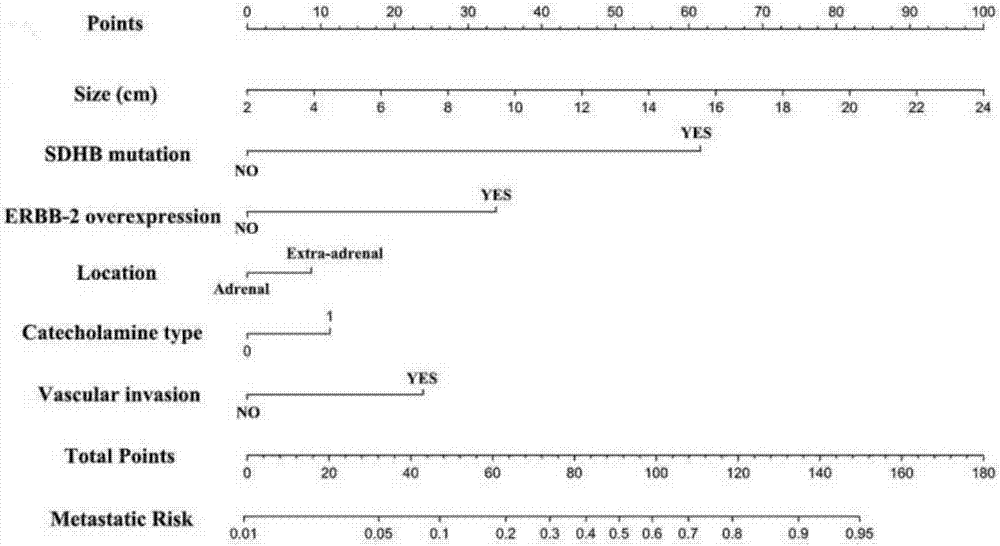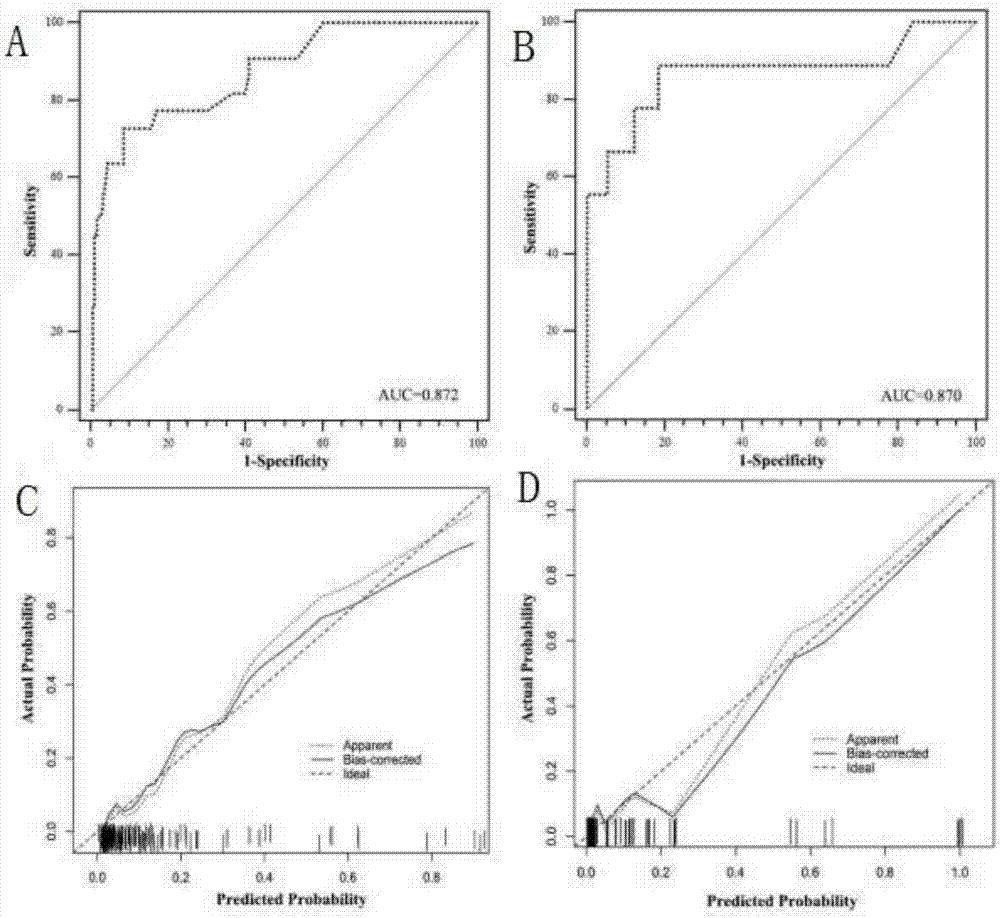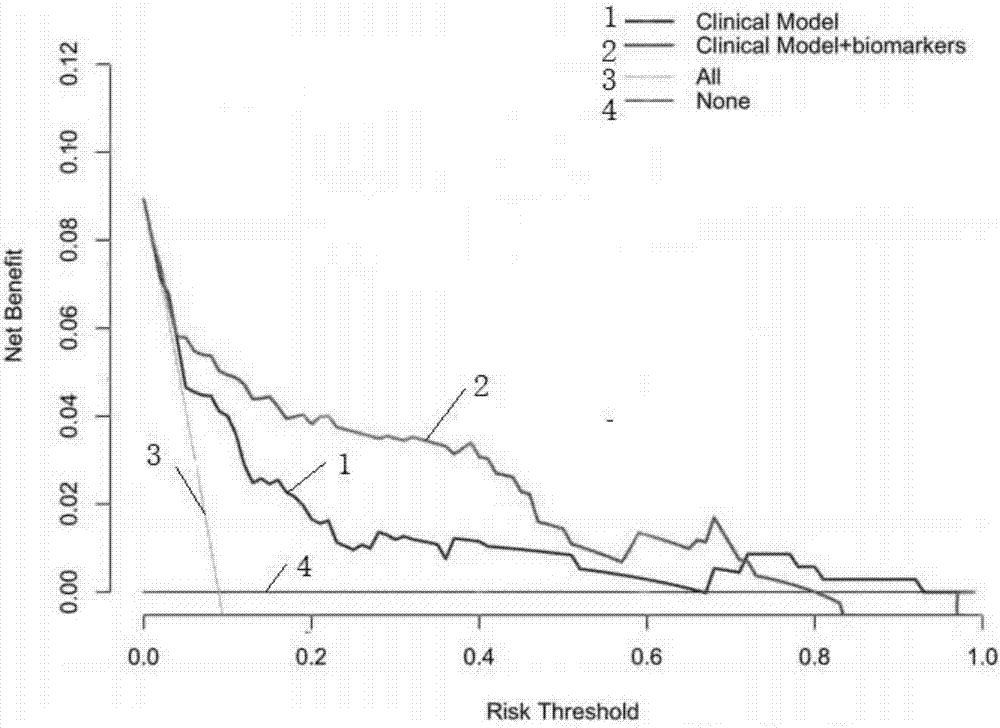Pheochromocytoma metastasis prediction system based on molecular marker
A technology of pheochromocytoma and molecular markers, applied in the field of pheochromocytoma metastasis prediction system, can solve the problems of predicting the risk of malignant tumors in the WD group, and achieve excellent prediction accuracy and good differentiation effect
- Summary
- Abstract
- Description
- Claims
- Application Information
AI Technical Summary
Problems solved by technology
Method used
Image
Examples
Embodiment 1
[0037] This example relates to the construction of a prediction system for pheochromocytoma metastasis based on molecular markers.
[0038] To screen out predictors or variables associated with pheochromocytoma metastasis; 347 patients with pheochromocytoma and paraganglioma in Shanghai Ruijin Hospital from January 2002 to December 2014 were included in the study. The median follow-up time was 93.5 months. Patients were randomly divided into experimental group (60%, n=208) and verification group (40%, n=139). Through the comparison of the basic indicators of patients in the experimental group and the verification group, there is no significant statistical difference between the experimental group and the verification group, suggesting that the grouping is reliable, and the two groups can be established and verified by nomograms.
[0039] The risk factors affecting pheochromocytoma metastasis in univariate and multivariate Logistic regression model analysis are shown in Table ...
Embodiment 2
[0048] Decision curve analysis was used to assess whether clinical application of molecular markers improved patient outcomes. The construction of the decision curve mainly explains: assuming that there is a probability threshold Pt, if the positive probability is greater than this threshold, the clinical operation will be performed, and if it is less than this threshold, then the clinical operation will not be performed.
[0049] 1. Select a pt (probability threshold Pt, if the positive probability is greater than this threshold, the clinical operation will be performed, if it is less than this threshold, it will not be performed).
[0050] 2. Calculate the number of positive and negative results using pt as the cut point
[0051] 3. Calculate the net benefit of the forecast model:
[0052]
[0053] 4. Change the Pt value within an appropriate range and repeat steps 2-3.
[0054] 5. Take Pt as the abscissa and net income as the ordinate in the Cartesian coordinate system...
PUM
 Login to View More
Login to View More Abstract
Description
Claims
Application Information
 Login to View More
Login to View More - R&D
- Intellectual Property
- Life Sciences
- Materials
- Tech Scout
- Unparalleled Data Quality
- Higher Quality Content
- 60% Fewer Hallucinations
Browse by: Latest US Patents, China's latest patents, Technical Efficacy Thesaurus, Application Domain, Technology Topic, Popular Technical Reports.
© 2025 PatSnap. All rights reserved.Legal|Privacy policy|Modern Slavery Act Transparency Statement|Sitemap|About US| Contact US: help@patsnap.com



